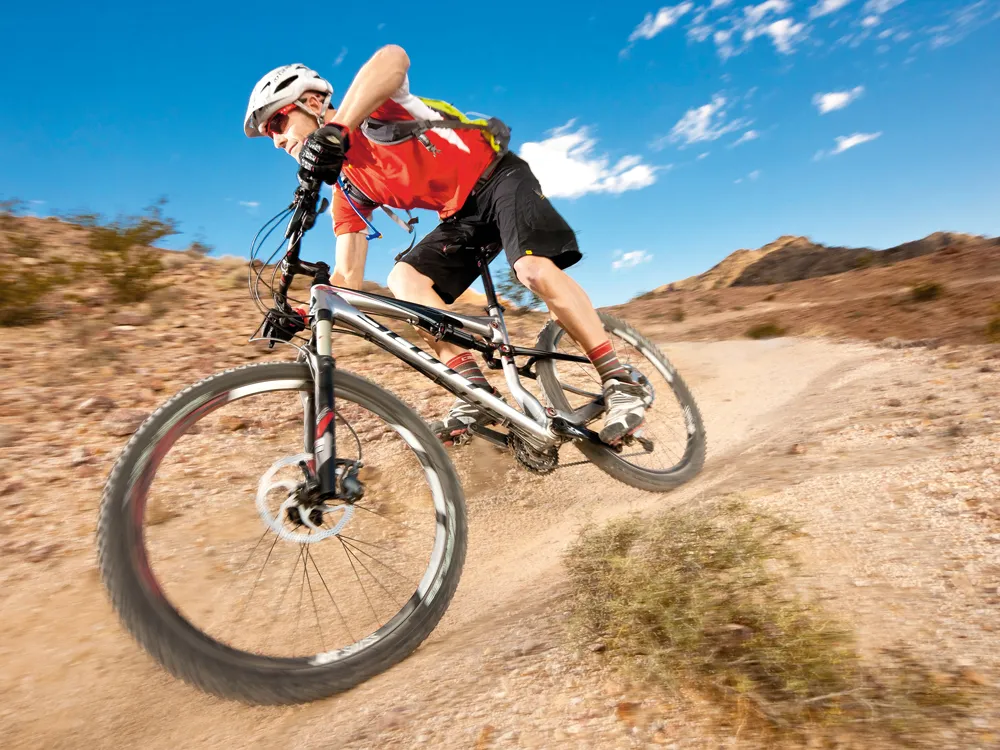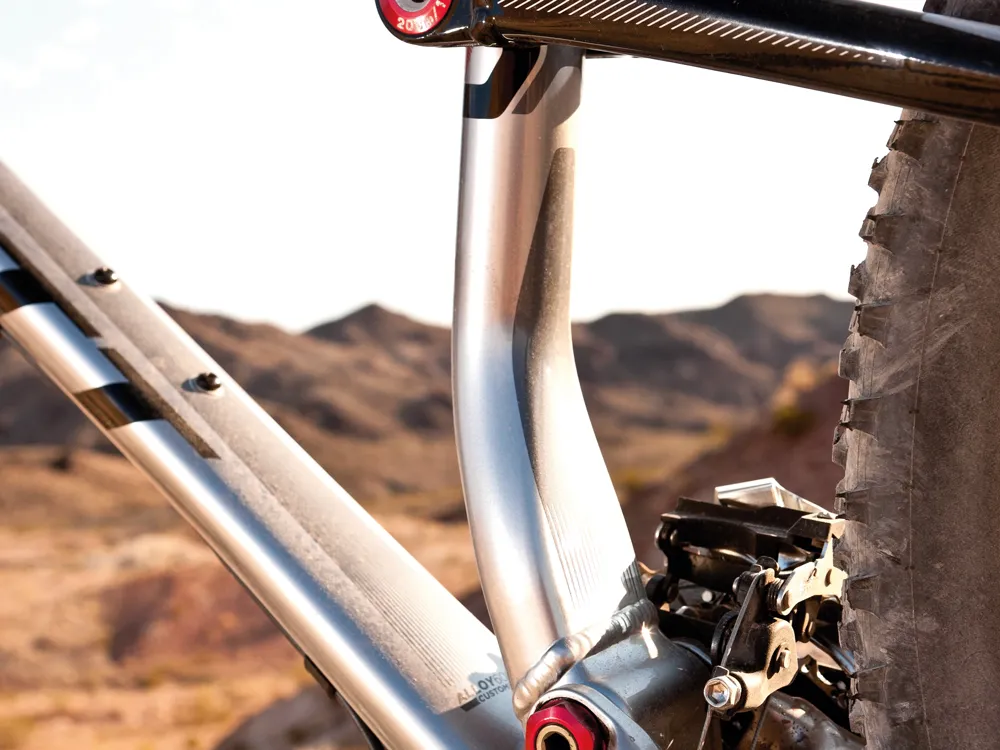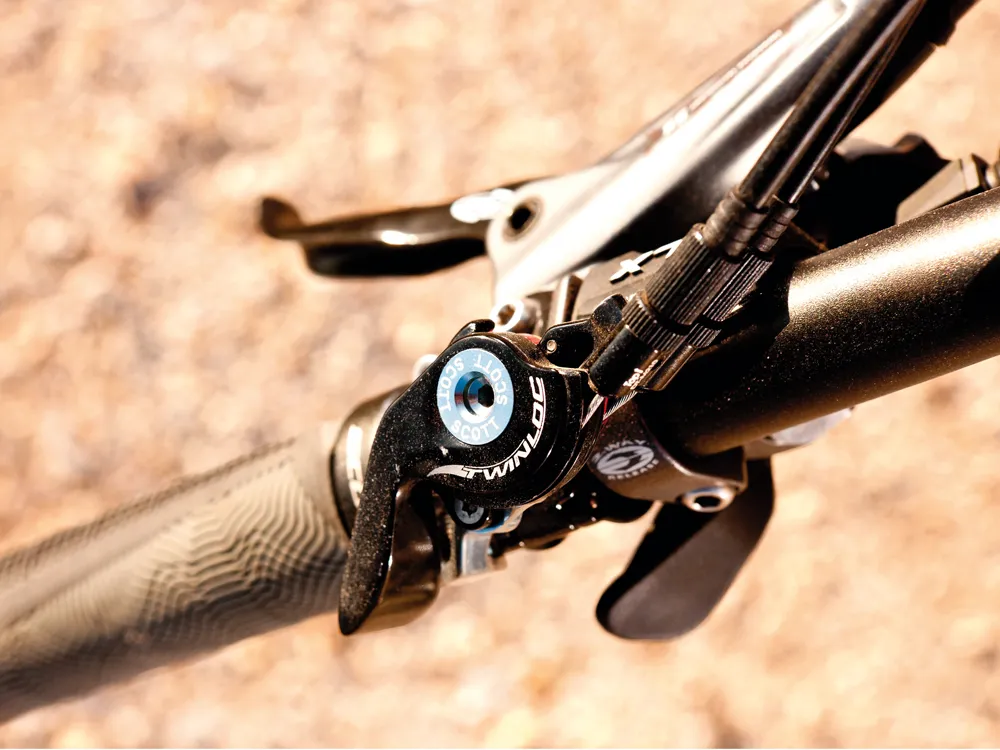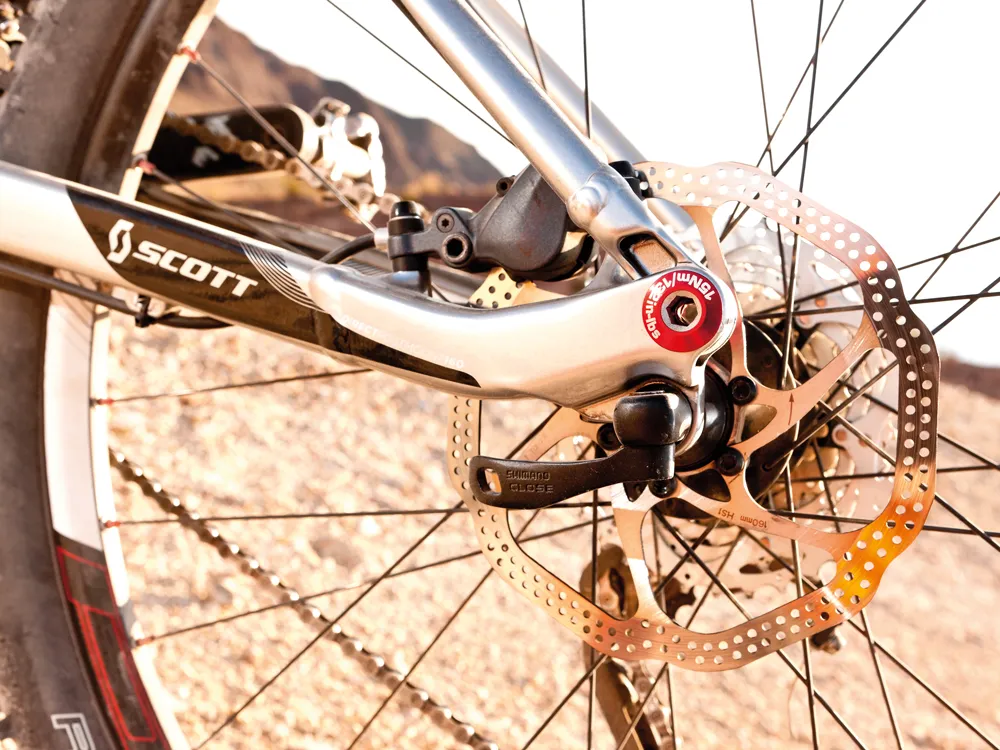Scott’s Spark has been a racers' and fast trail riders’ favourite for years. The all-new 2012 bikes combine tighter and lighter framesets with adjustable aggressive terrain geometry. The rear end isn’t the smoothest, but gives twin remote lockout sprintability that the target market will love. The top alloy-framed 40 model gives an impressively rapid and responsive ride in both 26 and 29in wheel formats.
Overall the Scott is an impressively tight feeling, responsive and agile short-travel race/fast trail bike. It loves relatively flat technical terrain and flowing singletrack and the remote lockout is a bonus for sprinters. Having ridden both, the 29in version adds 600g and some inertia but small bump control and stability increase even further while keeping accuracy and immediacy impressively tight.
Ride & handling: Primed to take on fast and flowing singletrack
Bootleg Canyon, Nevada where the Interbike demo days are held is a gruelling environment. Add jet lagged pre-dawn starts to get the best of the dawn desert light and it’s far from a rose tinted venue for a first impression of any bike. Full credit to the Scott for champing at the bit right from the off, with an eagerness and enthusiasm that was vibrantly clear. Frame stiffness is obvious, giving precise and accurate turn-in that lets us head angle plus short stem gives quick reacting but speed stable steering.
A relatively compact front end means plenty of weight forward for front wheel grip, which was very noticeable on the gravel and sand traps of Bootleg. The back end is equally crisp, clearly communicating traction from the grippy (in dry conditions at least) Schwalbe Rocket Ron tyres. Weight is good for a 120mm travel bike at this price and the triangulation of the big offset seat tube, chunky chainstays and large diameter down tube means a sharp kick through the back end. While bob is minimal anyway, being able to lock and unlock the suspension from the bars when the trail is smooth enough can be a useful speed boost.
Overall agility is good, easily popping and hopping off lips or hips to create a more playful feel than you’d expect. Suspension is in the pert and controlled, rather than plush camp, feeling more like a 100mm bike than the actual 120mm of movement. Compared to the latest Fox cans the DT Swiss air shock needs more force to get it moving and it’s not as fluid through the mid stroke. Small bump sensitivity is helped by essentially low single pivot suspension architecture and larger tyres. It can choke on square edges and bigger hits though.
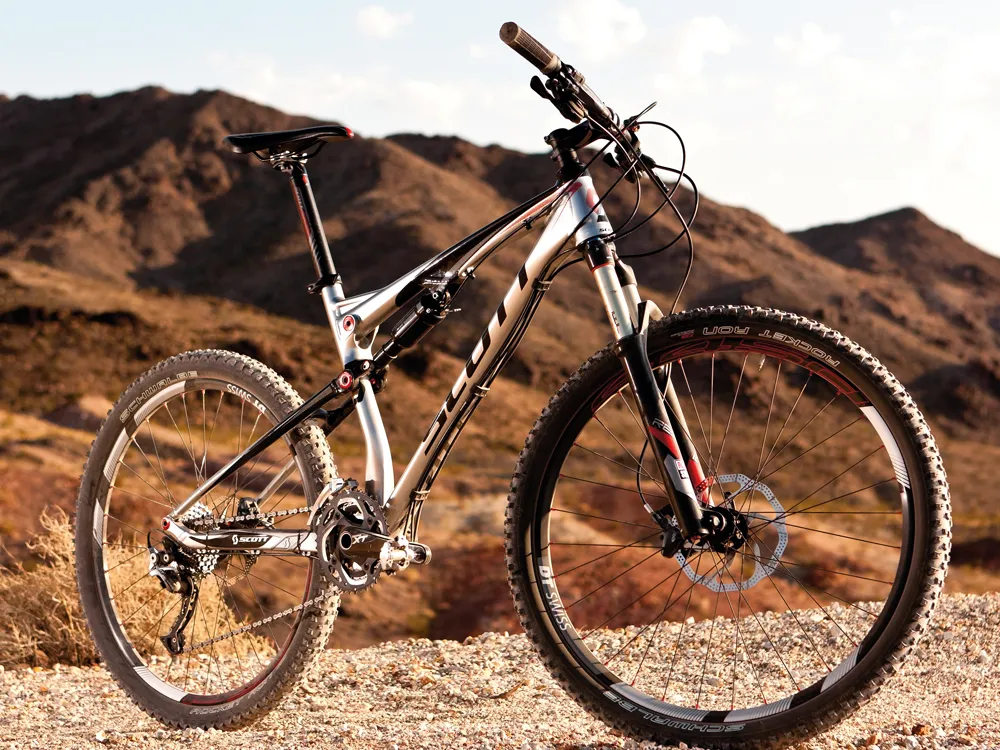
Frame: Adjustable geometry
Of all the 2012 bikes we’ve seen so far the Spark is one of the most sorted looking, with curved lines defined by purpose not just pose value. A tapered head tube means tight tracking even with a relatively short head tube. The shock mount is blended into the belly of the sloping top tube, which flares again at the seat tube for extra support where the rocket pivot pierces through. The ‘U Mono’ rocker is a nice piece that wraps back around the seat tube to allow space for the 190mm long shock. A two-position ‘chip’ for the rear shock lets you switch between 68.7/74.2° or 68/73.5° head/seat angles.
The seat tube is a work of art, with a massively offset square section lower end to give space for a DMD direct mount front mech. The chainstays are chunky enough to handle the power you can provide, with post-mount rear brake fixtures keeping things neat. You don’t get the universal dropout system used on the carbon framesets, just a 135mm QR-style setup. Brake/cable routing is Scott’s typically tidy clamp-anchored style on the mainframe, with remote shock cabling tucked under the top tube. The bearings hidden under the red anodized, laser etched caps are bigger than those on previous generation Scotts, with free and easy movement if you drop the shock out.
Equipment: Perfectly acceptable choices and reasonable value
Like the original bike, the shock is the defining piece of kit on the Spark mk2. The increase in travel to 120mm has been matched by an increase in shock length to 190mm (with a 50mm stroke) but it’s still a DT Swiss air can under the top tube. The new Spark gets the same neat TwinLoc metal lever, which engages and disengages the remote lockout of both rear shock and RockShox Reba fork. The alloy framed bikes don’t get the intermediate ‘Traction Control’ setting of the carbon bikes, or the ultra-light carbon fibre ‘Nude’ shock body.
The shock isn’t as smooth as it could be, which impacts confidence and control on more technical terrain. But if you’re not a regular rock eater, the tight and responsive frame, confidence-inspiring handling and remote lockout capability make this a quick and fun ride. This chassis would score even higher if it had a Fox can in there and not a DT Swiss one. DT Swiss also provide their midweight rims, mounted on a reliable Scott/Shimano hub combo. Both wheels and Reba fork rely on thick shafted, screw-up DT Swiss RWS skewers rather than screw-through 15 or 12mm axles.
Fatter 2.25in versions of Schwalbe’s Rocket Ron tyres add welcome extra float and small bump softness. Trail suitability is also enhanced by a Shimano XT/SLX mix that provides a full 30-speed setup rather than a racy 20-speed mix. Avid Elixir 5S brakes get a 180mm rotor up front for extra power. Scott’s finishing kit takes care of cockpit and seating duties in a perfectly acceptable style and at £2,300 the Spark 40 is reasonable value.
Unable to load media
Above is our first ride of the 29er version of the Scott Spark 40 at Interbike's Demo Day

